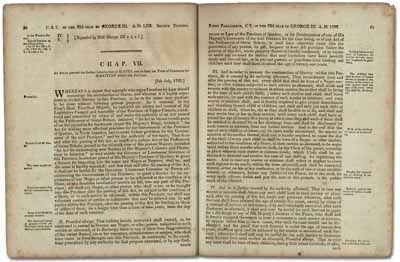Upper Canadian Act of 1793 Against Slavery National Historic Event

© Public domain / Archives of Ontario
The Upper Canadian Act of 1793 Against Slavery was designated as a national historic event in 1992.
Historical importance: First legislation in the British Empire against enslavement
Commemorative plaque: 494 Mississauga Street, Niagara-on-the-Lake, OntarioFootnote 1
Upper Canadian Act of 1793 Against Slavery
Inspired by the abolitionist sentiment emerging in the late 18th century, Lieutenant-Governor J.G. Simcoe made Upper Canada the first British territory to legislate against slavery, which had defined the conditions of life for most people of African ancestry in Canada since the early 17th century. The Act of 1793 did not free a single slave, but prevented their importation and freed the future children of slaves at age twenty-five. Faced with growing opposition in the colonies, slavery declined. The Imperial Act of 1833 finally abolished slavery in the British territories in 1834.
The National Program of Historical Commemoration relies on the participation of Canadians in the identification of places, events and persons of national historic significance. Any member of the public can nominate a topic for consideration by the Historic Sites and Monuments Board of Canada.
- Date modified :